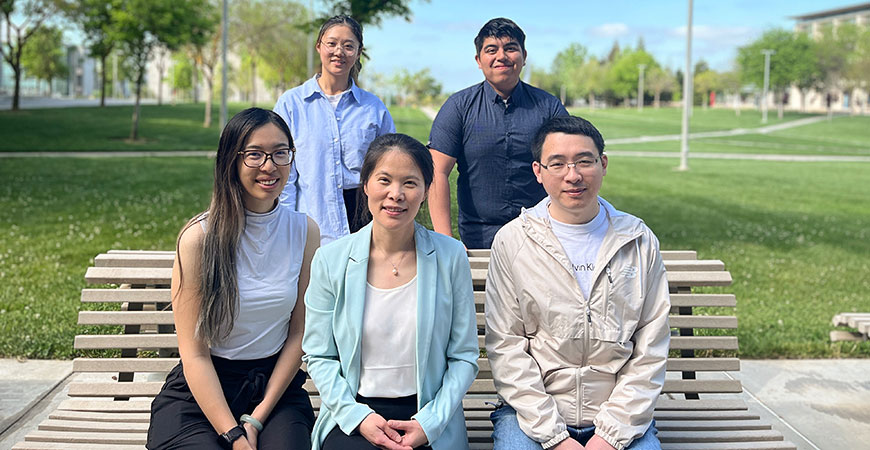
In Professor Xuecai Ge ’s lab, where UC Merced researchers study how cells talk to each other to develop and differentiate, a recent surprise discovery is lending insight as to how erroneous cell signals lead to disease and birth defects.
Ge and her colleagues zeroed in on a slice of the communication system, the primary cilia, and found a protein called Numb, which they didn’t expect to be there.
Numb facilitates development of the spinal cord and cerebellum during embryonic neurodevelopment.
“Numb was extensively studied about 20 years ago, and we expect that where Numb is located in the cell has been well characterized,” Ge said. “However, its association with the cilium has never been reported before, and this surprised us.”
Ge and her lab — which includes postdoctoral researcher Xiaoliang Liu and graduate students Jingyi Zhang, Eva Cai and Oscar Torres Gutierrez — worked with fellow researchers Fred Charron at McGill University and Jennifer Kong at the University of Washington. Together, they confirmed that knocking out Numb results in signaling errors in the cilium and impairs neurodevelopment. They detailed their findings in a paper published in the journal Nature Communications.
The primary cilium, a hair-like organelle, is found in nearly every cell of the body. The roles of cilia have been mysterious, but recent studies show they act like a cell’s antennae, detecting cues in the environment and converting them into intracellular signaling pathways — functional sets of proteins that coordinate in space and time to influence cell behavior, Ge explained. Mutations that disrupt ciliary function lead to a wide spectrum of human diseases.
With advanced microscopy and quantitative proteomic methods, the researchers looked in-depth at a pathway called Hedgehog signaling — the first pathway found to rely on the cilium.
“We wanted to understand how cilium mediates Hedgehog signaling, so we mapped all the ciliary protein over the course of Hedgehog signaling transduction,” Ge said. “Our findings unveiled a cohort of new ciliary proteins, including Numb. Numb is crucial to activate Hedgehog signaling. The cerebellum and spinal cord rely on Hedgehog signaling for their development, so knocking out the protein causes a major disruption.”
Ge is a member of the Department of Molecular and Cell Biology. She is also affiliated with the Health Sciences Research Institute, the CREST Center for Cellular and Biomolecular Machines and the Center for Interdisciplinary Neuroscience. She and her lab seek to understand the molecular underpinnings of neural development and developmental disorders. The large-scale study of proteins in this project also unveiled the potential ciliary localization for several other proteins known to play roles in neurodevelopment, which opens new avenues for exploring the mechanisms of action underlying these proteins.
This study marks the start of a new project initiated by Ge’s lab. She said there are many possible next steps.
“There are a few exciting directions to pursue after this,” Ge said. “First, it will be intriguing to study functions of other ciliary candidates from our proteomic (large-scale study of proteins) results. We might reveal more surprises like Numb. Second, it will be interesting to apply our cilium proteomic approach to mouse models in vivo. We are particularly interested in the cilia of neural progenitor cells in the developing brain.”



